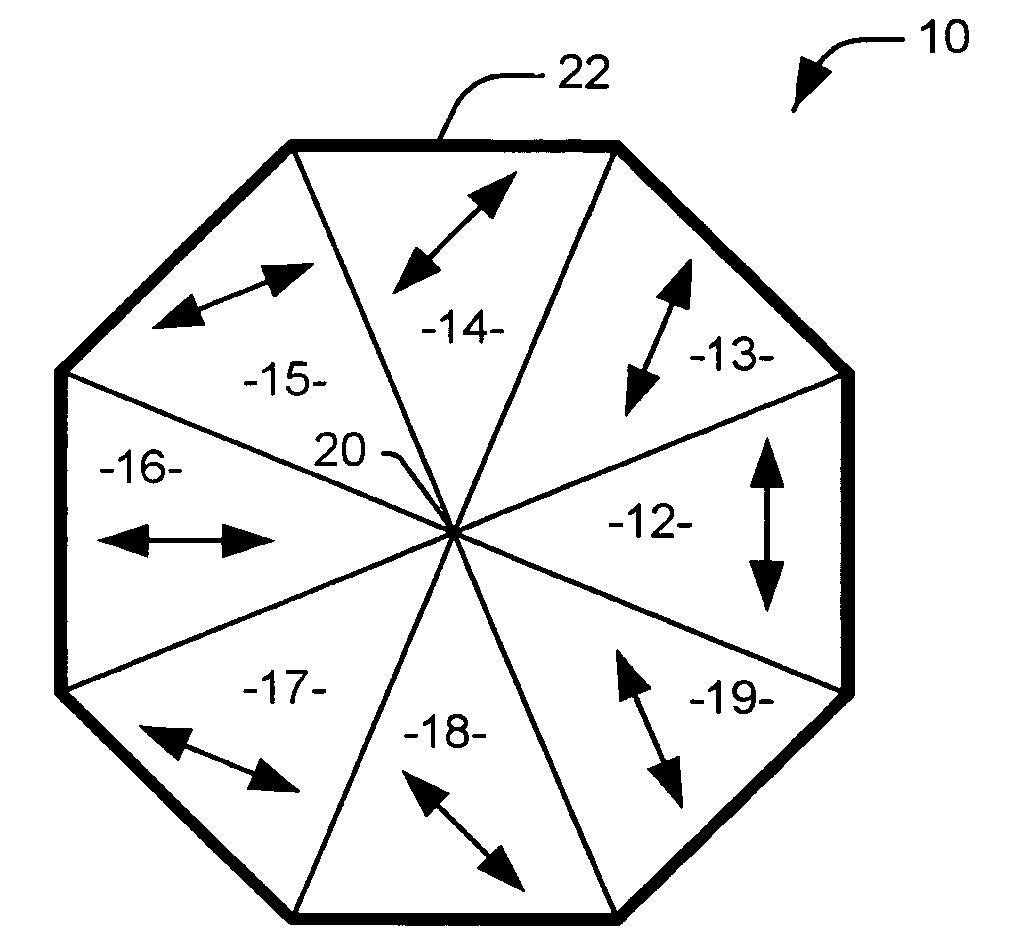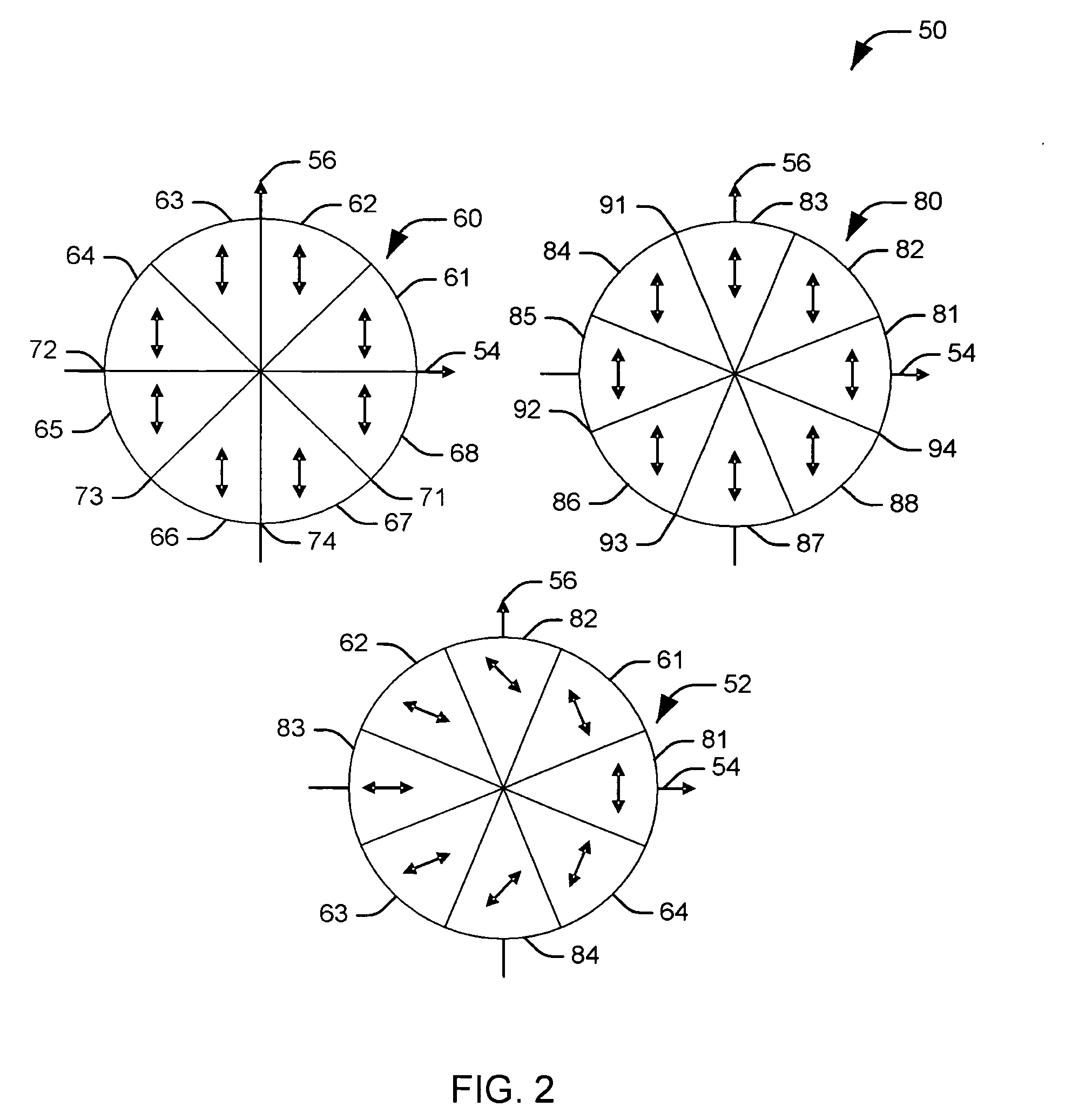Conversion of the polarization of light via a composite half-wave plate
a composite half-wave plate and light polarization technology, applied in the field of optical technology, can solve the problems of complex scheme, difficult control of resonator mode in such cavities, and inability to achieve the effect of high efficiency
- Summary
- Abstract
- Description
- Claims
- Application Information
AI Technical Summary
Benefits of technology
Problems solved by technology
Method used
Image
Examples
Embodiment Construction
[0011]In order to convert a linearly polarized beam into a radially / azimuthally polarized beam effectively, this invention employs the concept of orientation-independent polarization rotator using a half-wave plate having a characteristic c-axis, that is an axis in a birefringent material along which the electric field portion of electromagnetic field radiation experiences extraordinary index of refraction. When passing through a half-wave plate, a linearly polarized beam will have its polarization changed to the other side of the c-axis. Mathematically, it can be written as a′=2b−a, where b is the angle of the c-axis, a and a′ are the polarization angles of the input and output beams. This concept can be used to convert a linearly polarized beam into a “nearly” radially or azimuthally polarized beam. To this end, a composite half-wave plate can be utilized that represents an azimuthal variation of the c-axis representing a full cycle of rotation. Since the output polarization angle...
PUM
 Login to View More
Login to View More Abstract
Description
Claims
Application Information
 Login to View More
Login to View More - R&D
- Intellectual Property
- Life Sciences
- Materials
- Tech Scout
- Unparalleled Data Quality
- Higher Quality Content
- 60% Fewer Hallucinations
Browse by: Latest US Patents, China's latest patents, Technical Efficacy Thesaurus, Application Domain, Technology Topic, Popular Technical Reports.
© 2025 PatSnap. All rights reserved.Legal|Privacy policy|Modern Slavery Act Transparency Statement|Sitemap|About US| Contact US: help@patsnap.com



